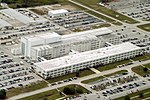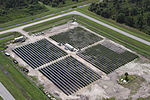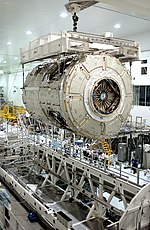United States Astronaut Hall of Fame
1990 establishments in FloridaAerospace museums in FloridaAviation halls of fameAwards established in 1990Buildings and structures in Titusville, Florida ... and 6 more
Halls of fame in FloridaHistory of spaceflightMuseums established in 1990Museums in Brevard County, FloridaSpace Shuttle tourist attractionsUnited States Astronaut Hall of Fame inductees

The United States Astronaut Hall of Fame, located inside the Kennedy Space Center Visitor Complex Heroes & Legends building on Merritt Island, Florida, honors American astronauts and features the world's largest collection of their personal memorabilia, focusing on those astronauts who have been inducted into the Hall. Exhibits include Wally Schirra's Sigma 7 space capsule from the fifth crewed Mercury mission and the Gemini IX spacecraft flown by Gene Cernan and Thomas P. Stafford in 1966.
Excerpt from the Wikipedia article United States Astronaut Hall of Fame (License: CC BY-SA 3.0, Authors, Images).United States Astronaut Hall of Fame
Space Commerce Way,
Geographical coordinates (GPS) Address Phone number Website Nearby Places Show on map
Geographical coordinates (GPS)
| Latitude | Longitude |
|---|---|
| N 28.52284 ° | E -80.683022 ° |
Address
Kennedy Space Center Visitor Complex
Space Commerce Way 9500
32953
Florida, United States
Open on Google Maps









